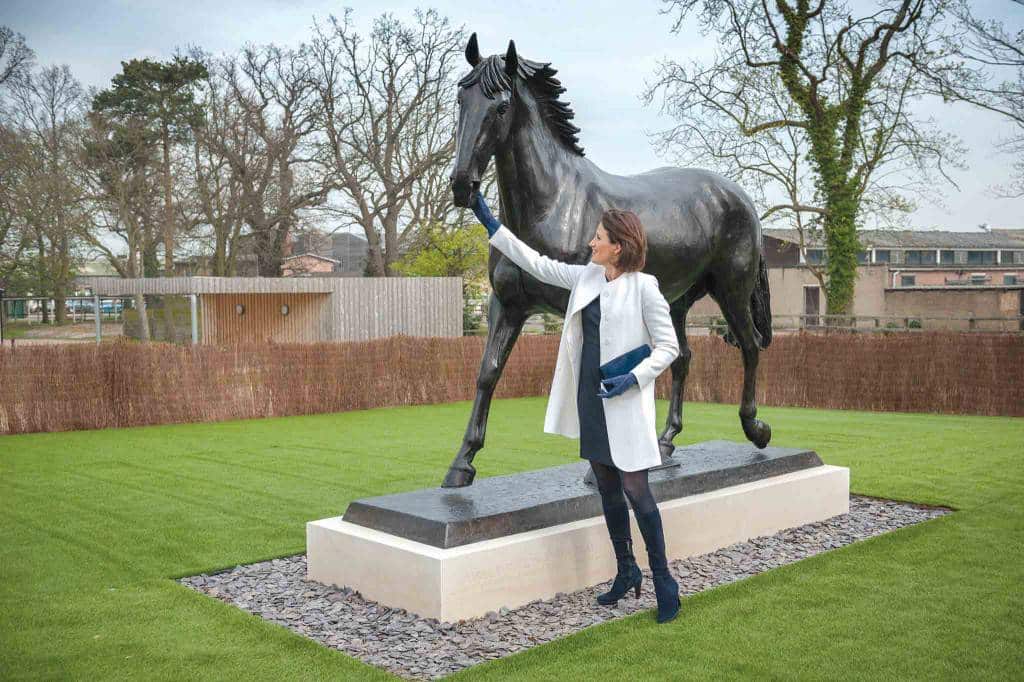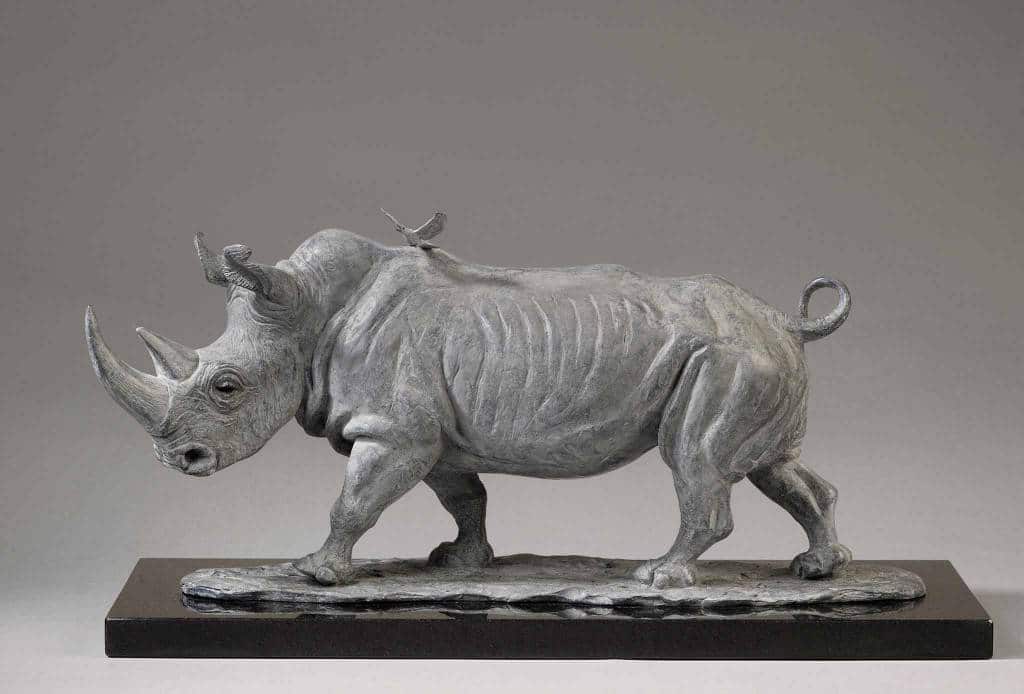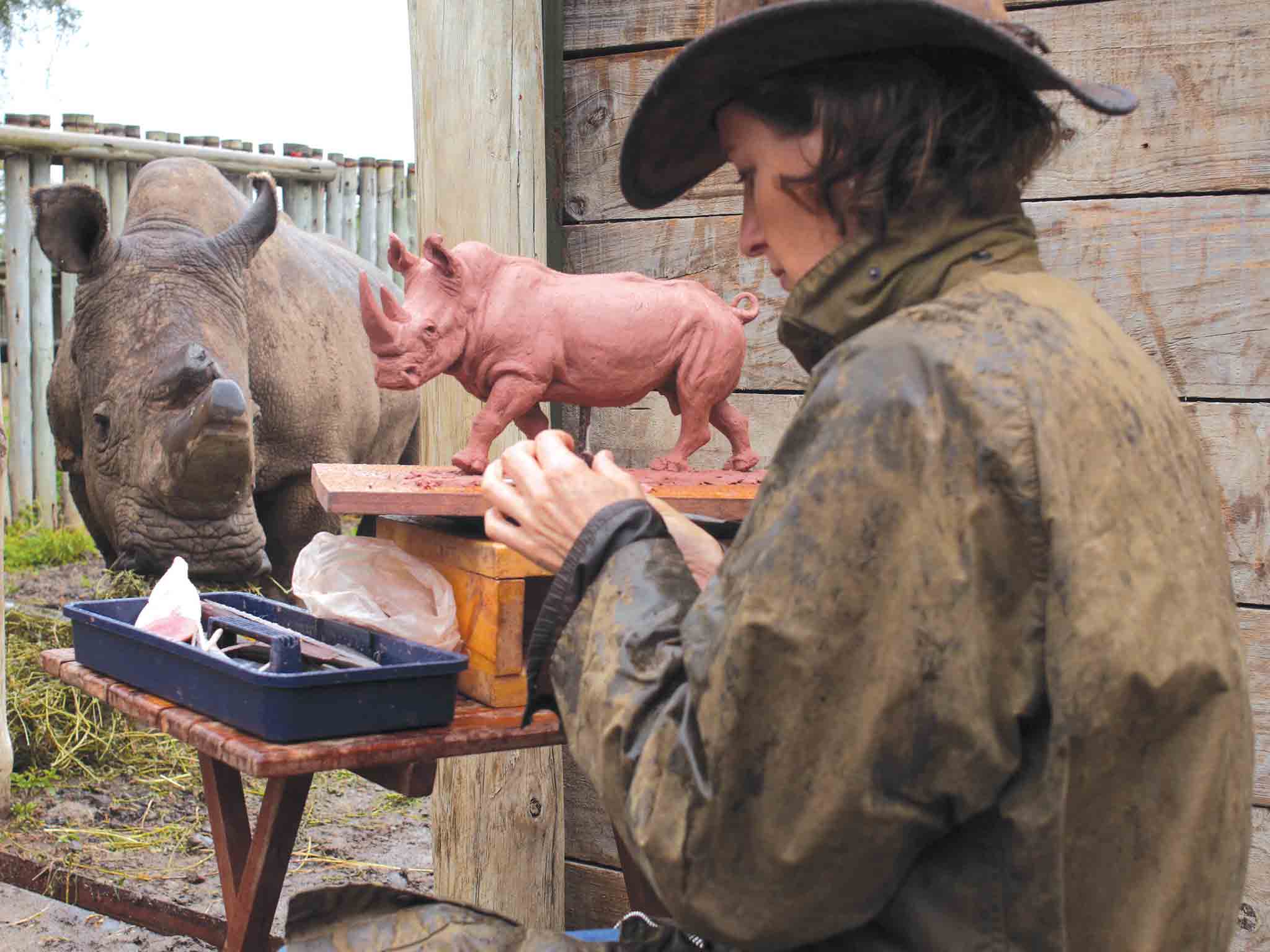A sculptor from just outside Tunbridge Wells has been shortlisted for the prestigious David Shepherd Wildlife Artist of the Year prize for her bronze of Sudan, the last male northern white rhino. Here Camilla Le May talks to Eileen Leahy about what inspires her, and why she is so passionate about the conservation work she is involved with in Africa
How long have you been working as a sculptor?
I have been sculpting professionally since 2000.
What got you interested in doing this as a career in the first place?
I started clay modelling when I was at St Leonards-Mayfield School. It had a great ceramics department where I was taught by a fantastic teacher, Celia Allen, who specialises in animals.
From there I went on to do a History of Art degree at Edinburgh University, and then I did two years at Chelsea College of Art and Middlesex University.
I also did evening classes in life modelling in clay, and after doing a masterclass with the late Sir Eduardo Paolozzi, and being encouraged by him, I decided to take it up seriously.
What was your first break?
Being accepted early on by the Frank T Sabin Gallery in Albermarle Street, London. It was an established gallery and provided me with great sales right from the start.
But I have to admit it was – and still is – a hard slog. I managed to afford to cast my first works into bronze because I worked at a foundry and was paid in bronze casts!
You also make jewellery, don’t you? Why did you decide to do this?
I only produce jewellery on a small scale. I would like to expand this and build up a collection, but I just don’t have the time at present.
I did a rhino brooch as a commission for the Lewa Wildlife Conservancy in Kenya for their retiring staff and it developed from there. I then created a silver version to raise funds for rhinos, and when Satao – a famous big tusker elephant – was killed in Kenya, I decided to commemorate him in a piece of silver jewellery and raise funds for the protection of elephants. I sell these pieces online, through word of mouth and at charity auctions.
What do you enjoy most about your work?
Of course I enjoy the actual sculpting, though it has stages where it is tough. But I especially love working from life, particularly from wildlife in Africa.
Do you use a local foundry, mould maker and caster to produce your work?
Yes, I work with Livingstone Art Founders in Matfield, and Loo Grandi of Sculpture Castings in Flimwell does my moulds and resin casts. My silvers are done by Just Castings in Hatton Garden, London.
Do you prefer sculpting or jewellery making, or are there benefits to both?
Jewellery is less stressful and rather easier and quicker, but the tiny scale can become a little trying, so in that respect I enjoy working on a larger sculptural scale as I find it more challenging and rewarding.
Your sculptural work tends to be very figurative, is there a reason for this?
It’s just my rather conservative approach, character and preference I guess – there’s no specific reason. The detail I work to is part of my perfectionist nature, which can be exhausting!
I don’t include every hair and skin crease, though, as I do not want the surface to become hard and lose life. I guess it’s about striking a balance between anatomical correctness and form but not overworking it, as it’s important to keep the vitality in the piece, too.

Your sculpture of Sefton, the Household Cavalry horse who survived the IRA bombing in Hyde Park in 1982, is one of your best-known works. How did the commission come about?
I was lucky. Peter Johnson of the Ackerman and Johnson Gallery in London showed a few of my works over the years, and was then approached by a contact of his at the Royal Veterinary College (RVC) who said they were looking for a painter or sculptor to do a portrait of Sefton. They also wanted someone to do a few beginners’ workshops with the students and staff there, and Peter kindly put me forward. The RVC were brave to take me on as it was my first large piece, but I was just in the right place at the right time.
What attracts you so much to Africa and conserving its wildlife?
I first went to South Africa in 1999 on a sculpture bursary from the Society of Wildlife Artists, which supported my trip.
I was blown away by the experience of being on safari and by the huge variety of wildlife. It never ceases to amaze and inspire me and gives me enormous joy. The UK, in comparison, has lost much of its wilderness to agriculture.
I ended up living in South Africa for the best part of eight years, and while there I met a fascinating lady – the late Anna Merz – who was a rhino conservationist. She dedicated her life to saving them and put all her funds into it.
How did she influence your work?
She became a dear friend and introduced me to Lewa in Kenya in 2009. It was really her dedication to rhinos, and my sadness at her sudden death, that I threw myself into supporting rhino security teams in a desire to help secure her legacy.
I then decided to sculpt individual rhinos, and as I spent months studying and sculpting them from my Land Rover, which I turned into a mobile studio, my love and understanding of rhinos grew.
The rhino is in danger of extinction, so what can be done to help?
By securing an area for a mega herbivore, this in turn protects a whole ecosystem, both for smaller species which share a symbiotic relationship, and also for so much more.
Rhinos and numerous other species are being driven to extinction by poaching and a rife illegal wildlife trade. It is a desperate situation with over 1,340 rhinos butchered just last year, and many youngsters being left as orphans. A thousand rangers have also been killed by armed poachers as they try to protect the wildlife.
I find it deeply distressing knowing the cruelty to animals who are being killed by slow methods, all for profit, so I do all I can to spread awareness and raise funds, particularly for rangers.

Your bronze of Sudan, the last male northern white rhino, was shortlisted for a prestigious prize earlier this year. How did it feel to be included in such illustrious artistic company?
Of course it was wonderful, and a great boost for my project – bringing more attention to the work. It was also so encouraging when one sold at the private view, which helped to cover my considerable costs of doing the work.
Sculpting Sudan, the last male northern white rhino in existence, was a moving and sad time, getting to know him so well and knowing he is the last male.
I also got to know an orphan southern white rhino baby named Ringo, who was a delightful character. The footage I was fortunate to catch of him going for an early morning run went viral!
How much money has been raised?
So far the Sudan bronze has raised $4,000 for charity. This is going to buy a vital portable incubator which will be of use in an attempt to save the northern white rhino through IVF, and also will be used in a collaboration with the Kenya Wildlife Service and The Ol Pejeta Conservancy, Kenya in a lab they are developing for endangered species.
My previous rhino sculptures and other works have raised around $47,000 for Kenyan conservation over the last few years.
How can people find out more about the work of these conservation trusts if they want to?
I support various organisations, and links to these can be found on my numerous blog reports at www.camillalemay.co.uk/blog








